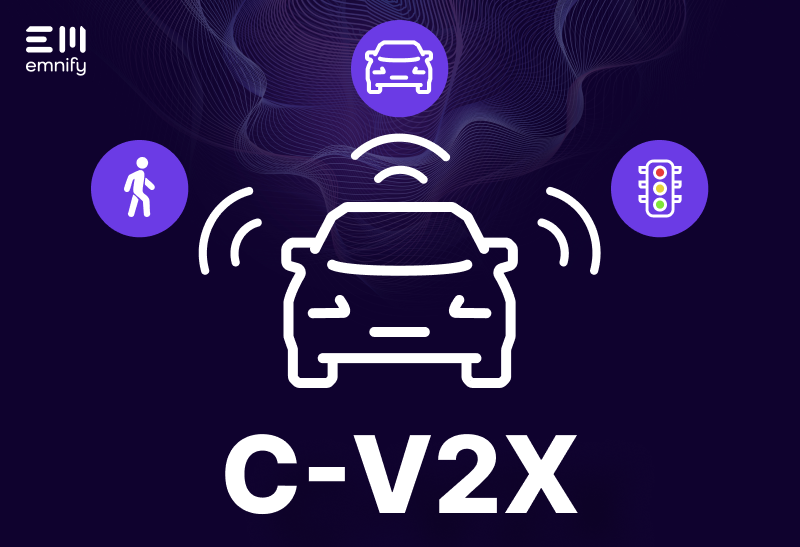.jpg)
.jpg)
Telematics and GPS tracking systems provide fleet managers with a real-time digital blueprint of the vehicle journey to unleash actionable insights on usage, driving behavior, maintenance requirements, safety precautions, and more. The fleet management market has been in a growth phase for many years, and if you are a telematics solution provider, you know the competition is only intensifying.
Telematics used to be as simple as showing location data of the fleets intermittently. Today, modern systems incorporate diverse IoT sensor data points and video footage in combination with analytics and AI algorithms to open new possibilities for increasing productivity and asset utilization in virtually any industry.
The growing competition, complexity, and deployment volume in the fleet management market requires telematics providers to adapt and respond faster to technology advancements, optimize solution uptime, and streamline internal operations.
- Getting your solution ready for new use cases
- Upgrading to new communication technologies
- Maximizing solution uptime across the board
- Gearing up for scale with automated processes
1. Getting your solution ready for new use cases
A telematics solution is made up of a wide variety of technologies ranging from core hardware, sensors, and connectivity to analytics and visualization software. While you have the choice to build your own devices, multiple hardware vendors in the market including Navtelekom, Teltonika, Ruptela, and Queclink provide off-the-shelf GPS trackers and add-on accessories to ease development and accelerate time-to-market.
The same applies to fleet management software with third-party platforms like Wialon and Geotab offering a ready-made application and interface for almost immediate deployment. On the other hand, solutions like flespi serve as a middleware that aggregates and normalizes various data sources, on top of which you can build your tailored application and algorithms. Whether you opt for customization or speed and simplicity, your solution needs to be nimble enough to address today’s fast-evolving array of fleet management use cases.
a. Hardware:
Different industries have different requirements for fleet information. So, the more extensive and advanced datasets your devices can capture, the more versatile your solution is across verticals. There exists a huge offering of aftermarket devices that can be retrofitted on the vehicles from temperature, tire pressure, and fuel sensors to accelerometers and dashcams. That said, OEMs are catching up by increasingly outfitting their vehicles with embedded sensors, electronic control units (ECU), and diagnostics tools. A tracking device that can interface with the vehicle’s onboard diagnostic system (OBDII) and ECU for data collection allows telematics integrators to leverage existing data sources and reduce the need for additional sensing units.
b. Platform:
Just like how telematics devices need to support multiple data types, the backend application needs to be able to structure these datasets and the frontend app should be able to transform them into powerful and easily palatable insights for business decisions. Some of the features a fleet management platform should have include:
- The ability to ingest data from various device types (GPS trackers, IoT sensors, OBDII)
- Customizable alerts, dashboards, and reports on fleet location, usage, and driving behavior
- Predictive maintenance, routing optimization, geofencing, and billing capabilities
- APIs for integrations into customer’s business systems and other platforms for supply chain management, fleet maintenance, fuel cards, rental service, and more
- Tailored industry solutions such as long-haul transportation, passenger transportation, and off-road fleet management
- Support for video telematics
- Support for mobile applications
2. Upgrading to new IoT connectivity
Cellular connectivity has been the de-facto standard for communicating fleet data from telematics devices to the backend application. But even the cellular infrastructure is evolving. Operators worldwide are phasing out 2G and 3G networks to re-farm their frequencies for 4G and, more recently, 5G rollout. In the USA, except for T-Mobile, major operators have already stopped their 2G service. Likewise, massive 3G sunsets have been scheduled for 2022:
- AT&T by February 2022
- T-Mobile by July 2022
- Verizon by December 2022
Regardless of your cellular provider, now is the time to upgrade your device fleet with future-proofed technologies. 4G is a great choice for the growing adoption of video monitoring in fleet management. But if your devices pertain to low-bandwidth and low-cost requirements, LTE-M is the ideal alternative to 2G and 3G while guaranteeing forward compatibility with future 5G networks.
What’s more, several telematics devices even pair cellular connectivity with other technologies to tap into new functionality and use cases for value addition. For example, many GPS trackers also incorporate Bluetooth Low Energy (BLE) module which can communicate with beacons attached to trailers and other transported assets. This enables tracking and theft prevention of non-monitored items beyond the lorries.
3. Maximizing solution uptime across the board
Every minute of downtime means a minute of visibility loss and customer frustration. When it comes to maximizing your solution uptime, two main factors come into play:
a. Reliability of individual components in your architecture (hardware, connectivity, software)
Building your own device and application gives you the highest control over their uptime. But if you’re outsourcing most, if not all components in your architecture, a close look into their features and Service Level Agreements (SLA) from the onset can help ensure their reliability further down the road. Here are a few best practices to consider:
- Support for context-aware over-the-air (OTA) firmware upgrade and firmware rollback in case the update fails, to minimize device disruption
- Utilizing multi-network IoT SIM cards to maximize signal availability within and across borders while providing fallback when one network is down
- Having robust networking and application platforms that are built in multiple cloud availability regions and leverage resilient architecture like microservices
b. Immediate issue detection and troubleshooting
With so many moving parts, even the most dependable telematics solutions are not entirely error-proof. When a problem arises, you need to be armed with the right tools to diagnose and resolve it swiftly. Full visibility into the real-time status of your devices, connectivity, and application allows for effective and quick isolation of the root cause when fleet data fails to be delivered. Likewise, tools like SMS console and remote access let you perform reboots and other maintenance tasks from afar to bring devices back online.
4. Gearing up for scale with automated processes
The number of telematics units shipped and deployed is growing by the year. As your fleet management solution starts gaining traction, mundane and manual workflows become a productivity killer and hinder growth. Process automation, when done correctly, not only increases efficiency and reduces costs but can also boost your solution reliability and lower issues and support tickets – as you scale to operate tens of thousands of devices across vast vehicle fleets. Some of the opportunities include:
- Device provisioning: GPS trackers often require some initial configuration via SMS to go online. Yet, when shipping devices to customers, it’s not always clear-cut when they are going to be installed in the vehicle. Context-aware device configuration and SIM activation ensure your fleet management devices are ready to launch the moment they are switched on.
- CRM and ERP systems update: As devices go online, automated synchronization with business systems allows you to keep tabs on your customer data, inventory flows, and revenue streams.
- Device lifecycle management: Automated notifications when SMS commands are successfully delivered to the devices or when unforeseeable connection issues emerge improve control over your solution while speeding up troubleshooting.
APIs have been a common choice for integration and data syndication across systems. Yet, the recent rise of no-code automation tools like Zapier, Integromat, and IFTTT is changing the game by granting operations teams more autonomy in workflow optimization and data democratization. These tools allow businesses to connect previously siloed processes without any dependency on development expertise.
Conclusion
Beyond the urge for improved asset utilization and productivity, the latest legislation policies on road safety and transportation, together with environmental initiatives for reduced carbon emissions are giving new impetus to telematics and fleet management growth. Alongside massive opportunities come stiff competition with growing market players and aggressive introduction of new solutions to maintain market relevance. Telematics solution providers are forced to be more innovative, agile, and efficient than ever to keep up with this pace. In this context, staying up to date with new IoT technologies and use cases while finding new ways to improve solution reliability and operational efficiency are vital to customer satisfaction and sustainable growth.
About emnify
From reliable connectivity and a one-stop portal for complete network visibility and control to powerful APIs, automated cloud integration and advanced security features, emnify gives all the tools you need to deploy and operate your telematics devices anywhere and at any scale. Learn more about how we can help your fleet management and telematics business or contact our cellular IoT expert to book a demo and free consultation today.
Get in touch with our IoT experts
Discover how emnify can help you grow your business and talk to one of our IoT consultants today!

Nhu has over six years of experience working with networking technologies and IoT connectivity solutions. She’s an avid tech learner with a customer-focused mindset.


